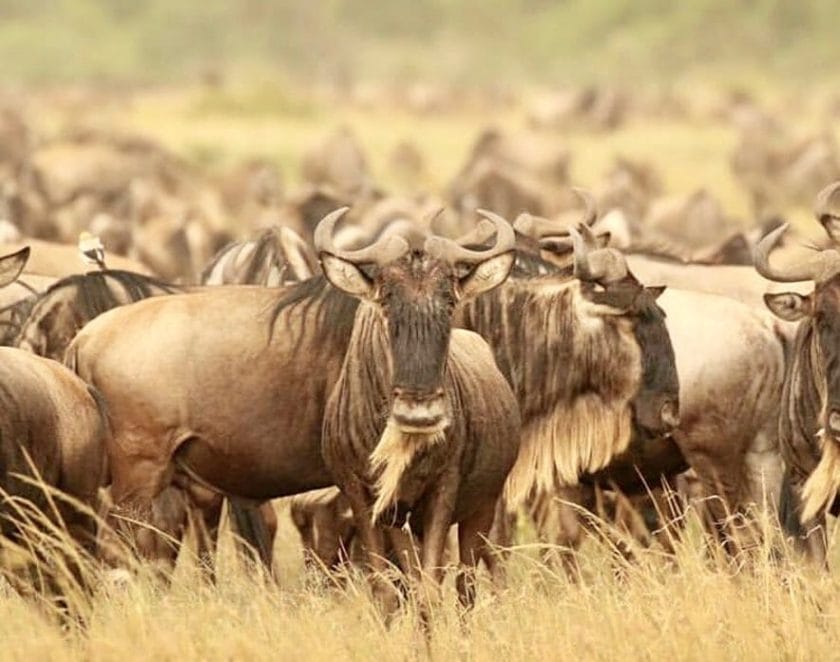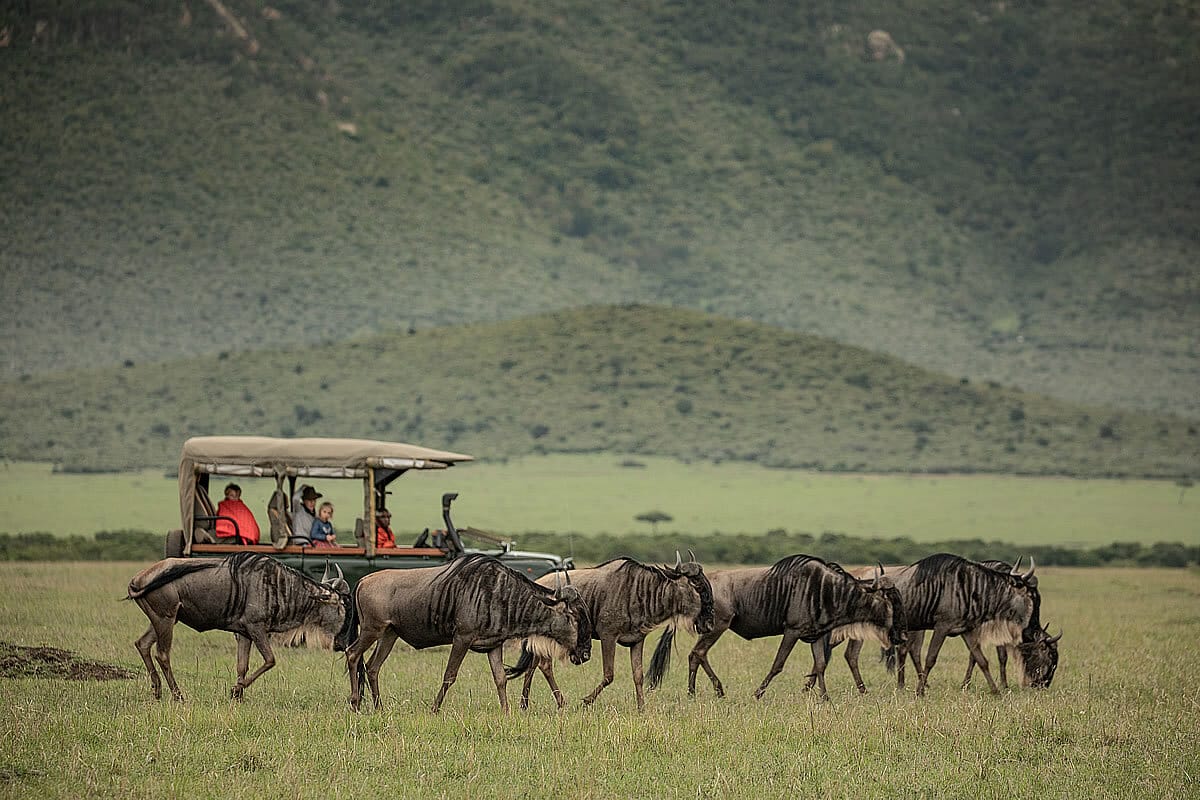The Great Migration is a dynamic phenomenon. While some months offer high-density viewing opportunities, others present a challenge in locating the dispersed herds. The best time to see the wildebeest herds is literally a moving target.
While the migration of over two million wildebeest, zebra, and various antelope species follows a roughly circular route, sightings can vary greatly throughout the year for several reasons. Most significantly, it is timed by the seasonal rains across Tanzania’s Serengeti and Kenya’s Maasai Mara.
In addition, the migration covers vast areas, spanning some 30,000 square kilometers between Tanzania’s Serengeti and Kenya’s Maasai Mara. The sheer size of this area means that the wildlife can be spread out and harder to locate at certain times of the year.
Unprecedented predator activity, especially lions, cheetahs, and hyenas, might also lead the herds to alter their paths, affecting where and when they are seen.
The best time for a safari to the Serengeti or Masai Mara depends on what you want to experience. For instance, the Calving Season, which occurs from late January to early March, is excellent for land-based predator-prey interaction.
Late July through September is ideal for river crossings. The herds generally start in the Southern Serengeti, traversing through Central, Western, and Northern Serengeti before crossing into Kenya’s Masai Mara, after which they’ll make their way back towards the south.
Factors like rainfall and flooding can impact the timing of a herd’s river crossing and where you can experience the best view.
Wet Seasons: March to May
During the wet seasons, particularly the’ long rains’ from March to May, the animals disperse widely across the plains, as water and grazing are plentiful everywhere, making sightings less frequent and predictable.
Dry Season: June to October
During the dry season, typically June to October in the Serengeti, water becomes scarce, and the herds move towards more reliable water sources, often resulting in more predictable and concentrated sightings.
TAKE A LOOK: HerdTracker’s new predictor map uses ten years of migration data to help travellers plan their great migration safari accurately. It provides a 12-month view of where the herd could be spotted.

Ultimately the Great Migration’s Seasonality can be condensed into the following six windows:
Calving Season (January to March)
- Location: Southern Serengeti, Tanzania
- Highlights: Around 500,000 calves are born during a short window in February. It’s a time of plenty for predators, making it an excellent season for witnessing predator-prey interactions.
Transition Period (April to May)
- Location: Central and Western Serengeti, Tanzania
- Highlights: The herds begin to move northward, gathering in large numbers. This is also the period of long rains, so prepare for wet conditions but spectacular green scenery.
Grumeti River Crossing (June to July)
- Location: Western Serengeti, Tanzania
- Highlights: The herds encounter their first major obstacle, the Grumeti River, where crocodiles await. This is less crowded compared to the later Mara River crossings.

Mara River Crossing (August to September)
- Location: Northern Serengeti, Tanzania, and Maasai Mara, Kenya
- Highlights: The most dramatic river crossings occur at the Mara River. These unpredictable crossings are a key highlight, featuring desperate dashes and dramatic escapes from lurking crocodiles.
Maasai Mara Sojourn (October to November)
- Location: Maasai Mara, Kenya
- Highlights: The herds graze in the rich pastures of the Mara, offering more opportunities to see large herds in a quintessential savannah landscape.
Returning South (December)
- Location: Eastern and Southern Serengeti, Tanzania
- Highlights: The herds begin their journey back to the Serengeti’s southern plains.
Dramatic River Crossings
Nothing underscores an authentic river crossing experience quite like the movements of over two million wildebeest, zebras, and gazelles across the main waterways and rivers of Tanzania’s Serengeti and Kenya’s Maasai Mara.
Admittedly some river crossings are more dramatic than others. In this Great Migration River Crossing Points Explainer, guides on the ground share insights about well-known river crossings carved into the banks of the Mara and Sand Rivers and what makes each one worthwhile for your Great Migration safari experience.
Sightings can also be planned around the following crossing points:
- Grumeti River Crossing – A quieter but perilous crossing due to large crocodiles.
Region: Western Corridor of the Serengeti
Key Months: June to July
- Mbalageti River Crossing—This crossing is not as dramatic as the other crossings, but it is still critical for the herds.
Region: Western Serengeti
Key Months: Shortly after Grumeti crossings
- Sand River Crossing – Ideal for those looking to see the migration without the large crowds.
Region: Near the Kenyan border in the northern Serengeti
Key Months: Part of the year-round migration pattern
- Talek River Crossing – A less frequent but important crossing for herds moving into Kenya.
Region: Bordering the Maasai Mara.
Key Months: Late in the migration cycle
HerdTracker is celebrating its 10th anniversary of making the natural phenomenon of the Great Migration accessible worldwide. Join the HerdTracker mission by sharing your migration sightings on our online platform , helping us inspire the next generation of safari travellers, or getting in touch to plan your adventure chasing the herd.






















